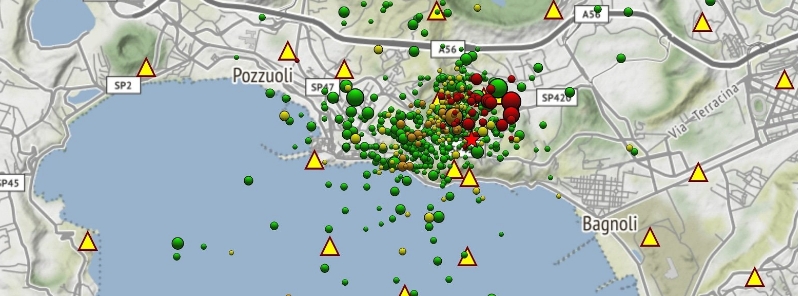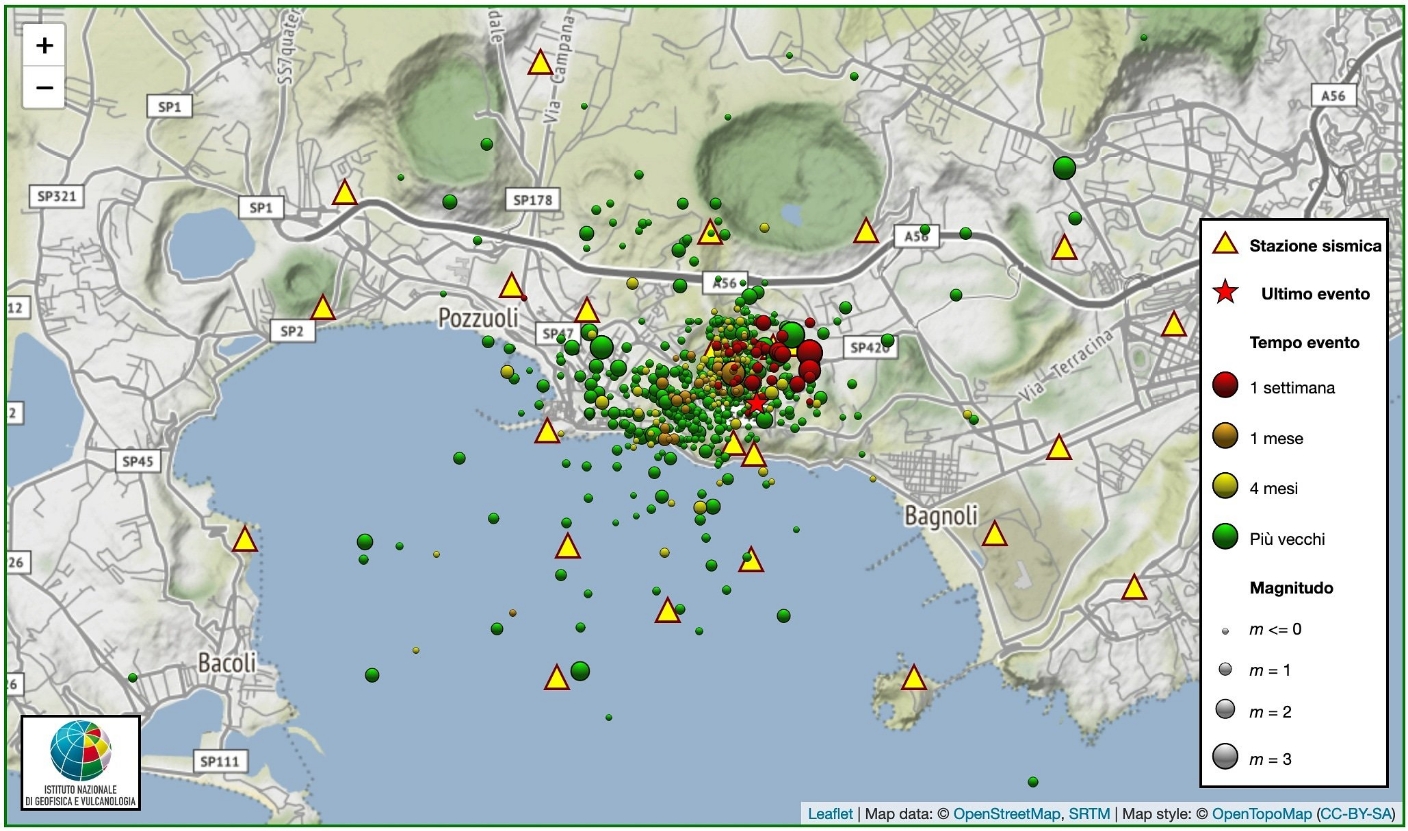Earthquake swarm in Campi Flegrei area, Italy

A seismic swarm took place in the Campi Flegrei area near the Pisciarelli fumarole at the Solfatara crater in Italy, on Sunday night, April 26, 2020.
It consisted of 34 tremors with magnitudes up to 3.1 and depths between 1 and 2 km (0.6 and 1.2 miles).
The seismologists of the Vesuvian Observatory (Naples Section of the INGV), who analyzed the events, did not detect any anomalies with respect to the current trend of the ongoing earthquake crisis.
"The occurrence of swarms of seismic events, which in some cases may be felt by the population, ordinarily occur during a period characterized by bradyseismic activity," they said.
Scientists at the observatory continue surveying the fumaroles in the Pisciarelli area, and report that there has been no opening of new vents.

Image credit: INGV Volcanoes Department
In 7 days to April 21, the observatory recorded a total of 21 earthquakes in the Campi Flegrei area, with magnitudes up to 1.1.
INGV-OV Campi Flegrei weekly bulletins.
Geological summary
Campi Flegrei is a large 13-km-wide (18 miles) caldera on the outskirts of Naples that contains numerous phreatic tuff rings and pyroclastic cones. The caldera margins are poorly defined, and on the south lie beneath the Gulf of Pozzuoli.
Episodes of dramatic uplift and subsidence within the dominantly trachytic caldera have occurred since Roman times. The earliest known eruptive products are dated 47000 yrs BP.
The caldera formed following two large explosive eruptions, the massive Campanian ignimbrite about 36 000 BP, and the >40 km3 (9.6 mi3) Neapolitan Yellow Tuff (NYT) about 15000 BP. Following eruption of the NYT a large number of eruptions have taken place from widely scattered subaerial and submarine vents.
Most activity occurred during three intervals: 15000 – 9500, 8600 – 8200, and 4800 – 3800 BP.
Two eruptions have occurred in historical time, one in 1158 at Solfatara and the other in 1538 that formed the Monte Nuovo cinder cone.
Featured image credit: INGV Volcanoes Department

Commenting rules and guidelines
We value the thoughts and opinions of our readers and welcome healthy discussions on our website. In order to maintain a respectful and positive community, we ask that all commenters follow these rules.